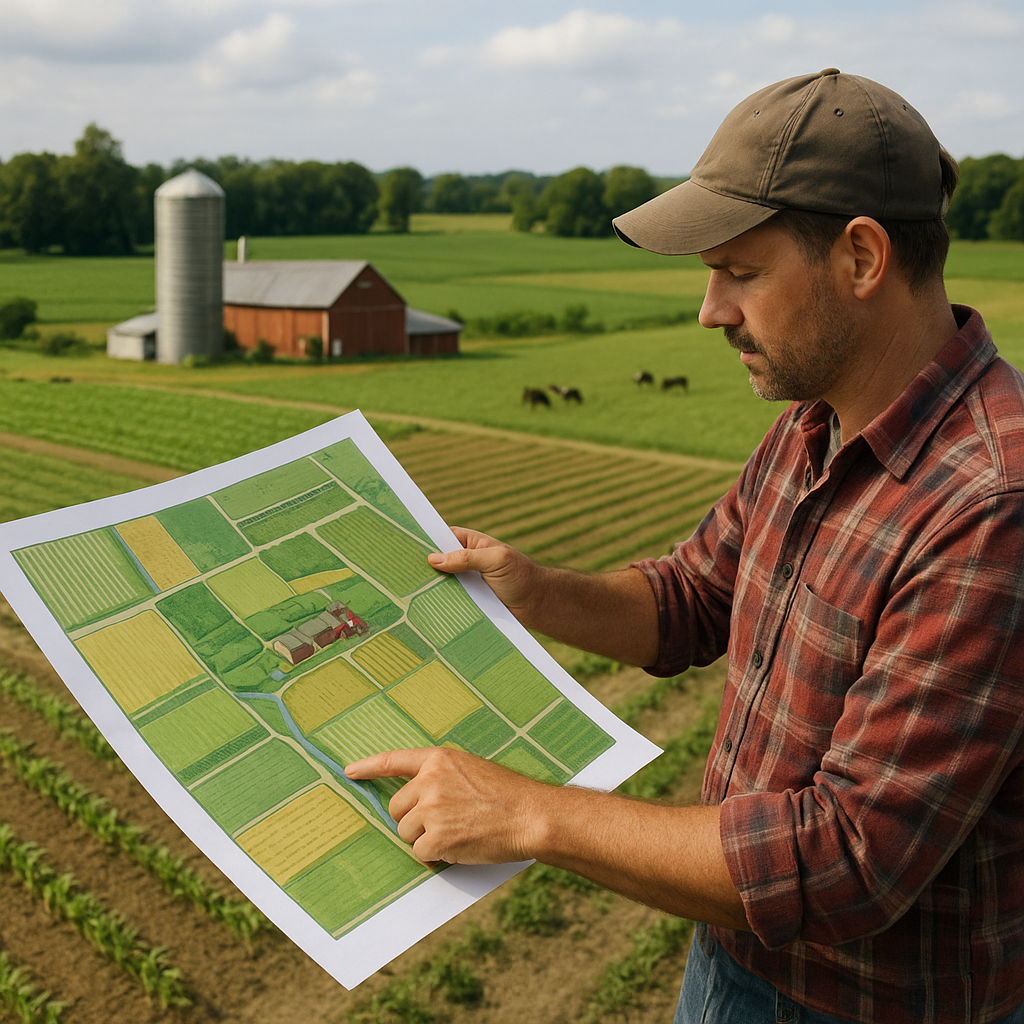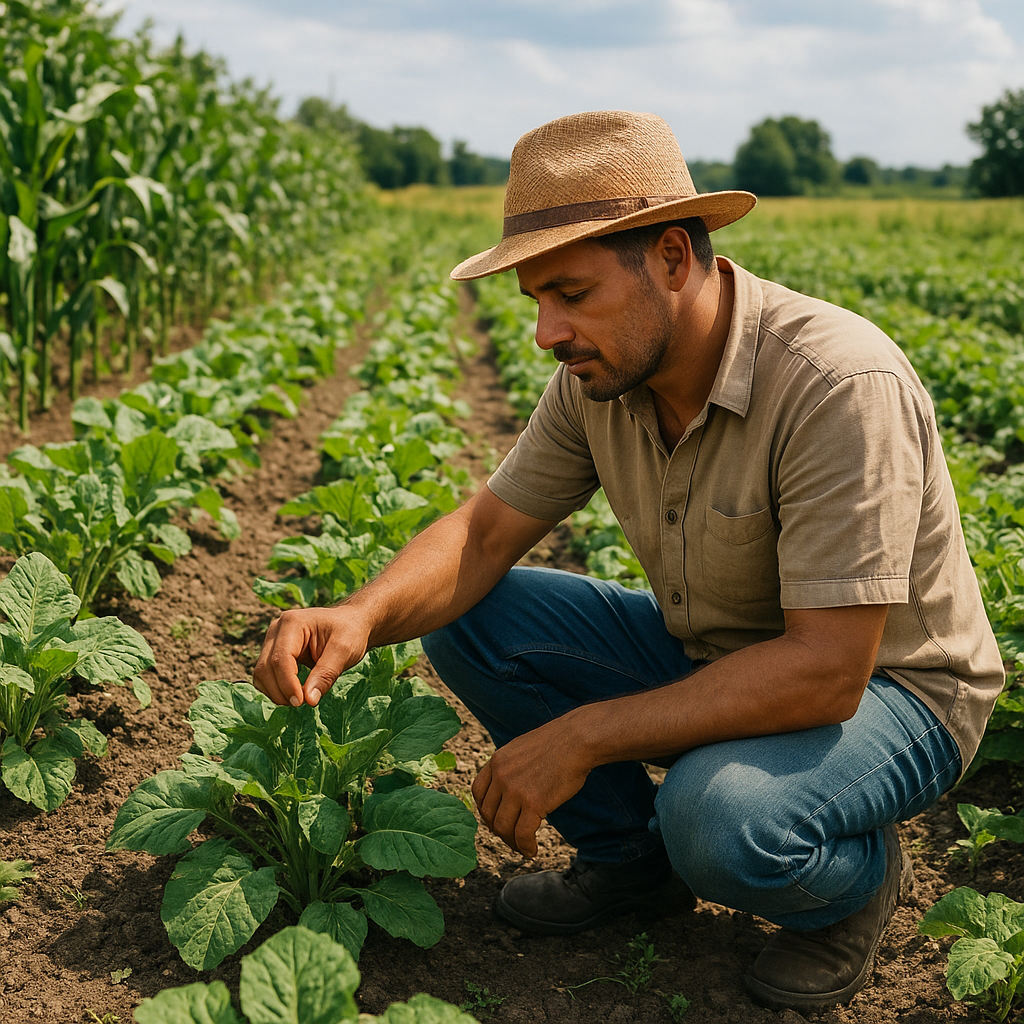
Designing a productive and sustainable farm requires thoughtful planning, strategic resource allocation, and a focus on long-term sustainability. This guide explores essential practices to maximize efficiency in your agricultural operation, covering layout design, water management, soil health, and modern technology. Whether you manage a small family plot or a large commercial enterprise, these insights will help you boost productivity and secure higher yield season after season.
Farm Layout and Zoning
A well-organized farm layout lays the foundation for streamlined workflows and reduced labor costs. Start by mapping existing features—fields, barns, irrigation lines, and roads—and identify areas for expansion. Prioritize direct access to key assets, such as equipment sheds and processing zones, to minimize travel time and fuel consumption. Follow these guidelines:
- Cluster storage, machinery, and processing facilities near the farm entrance for rapid loading and unloading.
- Allocate separate zones for crop rotation blocks to maintain diversity and interrupt pest cycles.
- Design traffic lanes wide enough for tractors and implements to move without obstruction.
- Reserve buffer strips of native vegetation along field edges to support biodiversity and protect waterways.
Integrating multi-functional spaces—such as combining a seed cleaning area adjacent to storage silos—reduces handling time. Use contour mapping to align field rows with natural slopes, preventing soil erosion and improving water infiltration. Ultimately, strategic farm zoning enhances operational flow and maximizes every square foot of your land.
Water Management Strategies for Growth
Optimizing water use is critical for healthy crops and cost-effective operations. Implement a comprehensive irrigation plan that balances supply with crop demands while conserving this precious resource.
Irrigation System Selection
Choose between surface, drip, and sprinkler systems based on crop type, soil texture, and climate. Drip irrigation excels in delivering water directly to root zones, reducing evaporation losses, whereas pivot sprinklers cover large areas quickly.
- Irrigation uniformity: Ensure even distribution to avoid overwatering low-lying spots and underwatering higher ground.
- Pressure regulators and flow meters: Maintain consistent pressure and track usage for precise water budgeting.
- Automated valves and timers: Schedule watering during cooler hours to reduce evaporation.
Water Harvesting and Recycling
Capture rainwater with roof gutters, storage tanks, and on-farm ponds. Treat and reuse runoff for non-potable tasks or as supplemental irrigation. Adopting water-harvesting techniques can slash reliance on wells and municipal supplies.
- Contour bunds and swales slow runoff, encouraging infiltration and groundwater recharge.
- Construct wetlands to naturally filter irrigation return flows before reuse.
- Regularly maintain pipes and canals to prevent leaks and maximize conveyance efficiency.
Boosting Soil Health with Nutrient Management and Crop Rotation
Maintaining fertile soil health is the bedrock of sustained productivity. A holistic nutrient management plan optimizes fertilizer inputs, enhances microbial activity, and fosters robust root systems.
Soil Testing and Amendments
Conduct comprehensive soil analyses every 2–3 years to monitor pH levels, organic matter, and nutrient profiles. Based on results, apply:
- Lime or gypsum to adjust pH and improve soil structure.
- Organic compost or well-aged manure to boost organic matter and microbial diversity.
- Targeted mineral fertilizers—nitrogen, phosphorus, potassium—to address specific deficiencies.
Crop Rotation and Cover Crops
Rotate cereals, legumes, and oilseeds to break pest and disease cycles and enhance nutrient cycling. Incorporate cover crops, such as clover or rye, during off-seasons to:
- Suppress weeds through dense ground cover.
- Fix atmospheric nitrogen in legume species, reducing synthetic fertilizer needs.
- Protect topsoil from erosion and leach nutrients back into the field.
By alternating deep-rooted and shallow-rooted crops, you improve soil porosity and water infiltration. Over time, these practices nurture a resilient soil ecosystem capable of sustaining high yield potential.
Leveraging Technology and Innovation
Advanced technology tools empower farmers to make data-driven decisions, optimize inputs, and automate routine tasks. Embrace innovations that align with your scale and budget to achieve significant efficiency gains.
Precision Agriculture Tools
- GPS-guided tractors and auto-steer systems enhance planting and harvesting accuracy, reducing overlap by up to 20%.
- Variable rate application (VRA) technology allows for site-specific fertilizer and pesticide distribution based on real-time field data.
- Drone-mounted multispectral sensors assess crop vigor, identify stress zones, and guide targeted interventions.
Farm Management Software and Connectivity
Implement cloud-based platforms to track inputs, monitor equipment maintenance schedules, and analyze financial performance. Integrate weather forecasts and soil moisture readings into dashboards for proactive resource allocation.
- Use mobile apps to log field activities instantly, ensuring accurate records for audits and planning.
- Install IoT sensors for soil moisture, temperature, and nutrient levels, feeding continuous data to central systems.
- Adopt remote monitoring for livestock, greenhouse conditions, or irrigation networks to detect anomalies early.
Combining automation with precise data collection improves productivity and reduces manual labor. As technology evolves, even small farms can access scalable solutions that drive down costs and elevate overall farm performance.

